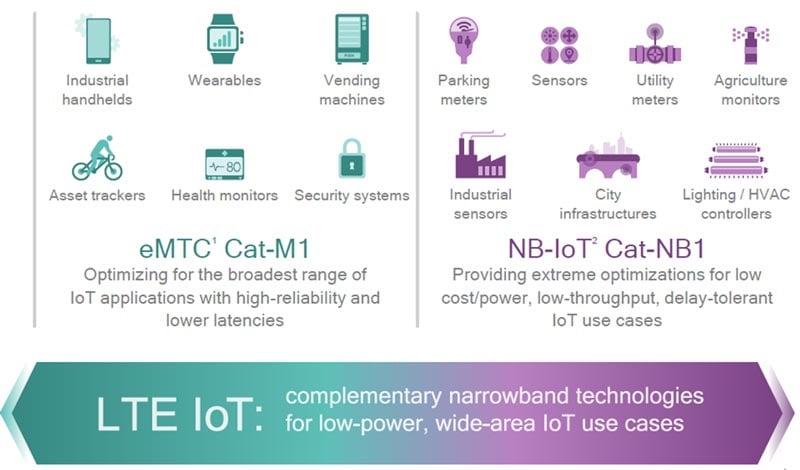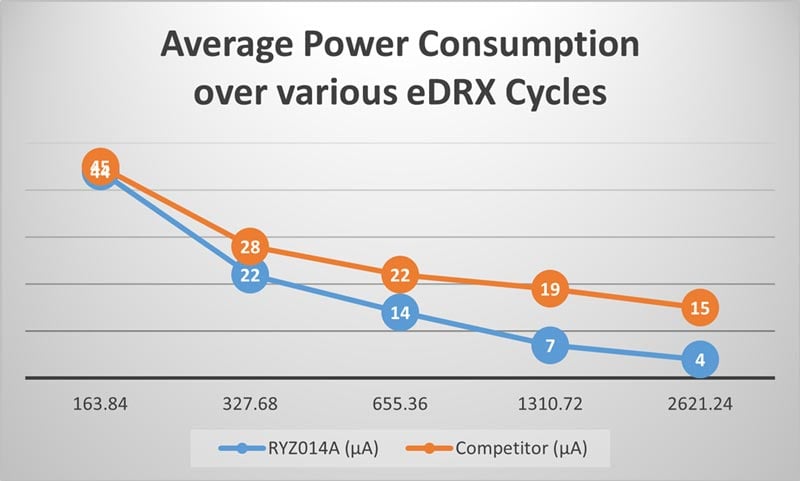Well, maybe not completely true since it did all start with a wired Ethernet connection, but that has limited this nascent billions-of-units IoT market. Wireless has now become the preferred method of connecting an IoT device. However, the infrastructure with gateways and routers to eventually get it up to the cloud can be unreliable, slow, expensive, and open to security hacks. A cellular-connected device or “thing” with the freedom to roam with direct access to the Internet and security now solves that problem.
Enter Cat M1
Perhaps you have heard about LTE Cat M1 cellular modems. This technology is now supplying the next generation of connectivity to make the Internet of Things business models more relevant and achievable by lowering device maintenance costs and ensuring reliable and efficient connectivity. In this blog post, we will talk about some technical details of Cat M1 and why it will be worth considering when implementing future IoT initiatives, from medium to large-scale projects.
What is Cat M1?
Category M1 (Cat M1) is a technology that functions on a 1.4MHz (reduced from 20MHz) spectrum, has a transmit power of up to 23dBm, and provides average upload speeds between 200kpbs and 400kpbs. This technology can extend battery life, potentially by up to 10 years.
Verizon, AT&T and T Mobile have all released the Cat M1 technology along with multiple semiconductor partners, such as Sequans and Renesas. It was released over the 4G LTE (Long Term Evolution) network with an open environment and has now reached nationwide coverage in the US and around the globe.
Advantages
There are several advantages that Cat M1 brings to IoT solutions such as coverage, security, variety, and efficiency. The fact that Verizon will launch it with an open environment will ensure ubiquity, the factor that makes trends become real. Now, more makers and developers will be able to launch IoT projects.
Security
Cat M1 allows low-power, wide-area technologies to work with a licensed spectrum, which provides a secure and private network, possibly the number one concern for businesses considering IoT initiatives. It works specifically with IoT applications with low to medium data usage and devices with long battery lifetimes.
Markets
This technology will enable applications across different industries and areas such as smart homes, industrial monitoring, asset tracking, healthcare, retail, smart cities, wearables, and much more. Cat M1 is important because it extends LTE’s market reach. By allowing LTE to cost-effectively support lower data-rate applications, Cat M1 is being touted as a good fit for low-power sensing and monitoring devices such as health and fitness wearables, utility meters, and vending machines, among many others.

Power
As the communication interface of IoT devices is mostly dormant, it is very important to look at power consumption while sleeping. In LTE Cat-M1 there is the concept of extended discontinuous reception, eDRX for short, which defines the time a device can sleep before checking the network for any messages. This is the so-called paging window. For LTE Cat-M1 the eDRX can range from 320ms up to roughly 43 minutes.
While sleeping, the device is in power-saving mode (PSM). In this case, the RYZ014A has a big benefit by only consuming 1µA in PSM. In the figure below, you can see an example of average power consumption compared to a competitive device depending on the eDRX cycle. As is evident, the longer the eDRX cycle, the lower the system power consumption of the RYZ014A and the bigger the benefit.

Cat M1 modems come with inexpensive cellular access while using all the advantages of the LTE network. This will make it cheaper to connect each device, which will be especially beneficial when installing larger networks requiring a very low cost per unit. Efficiency is also reflected in coverage. Current coverage struggles with in-building or underground areas. We expect LTE coverage combined with Cat M1 modems will solve this issue.
What’s Renesas doing in this market?
These new technologies are paving the path to 5G. Cat M1 is a step closer to delivering cellular-based IoT capabilities, which means more flexibility and robust applications with significantly lower costs, and it will also solve some technical issues. In addition, location-based services, like MCUs and embedded SIM (eSIM) are just some of the product roadmap items we will discuss in the next blog, so stay tuned!
Overall, Cat M1 will help make IoT massive and mainstream and Renesas is right in the mix now with the RYZ014A Cat M1 cellular modem module and the tools to help jumpstart your next IoT design. To learn more and order kits or samples, please visit renesas.com/RYZ014A.
